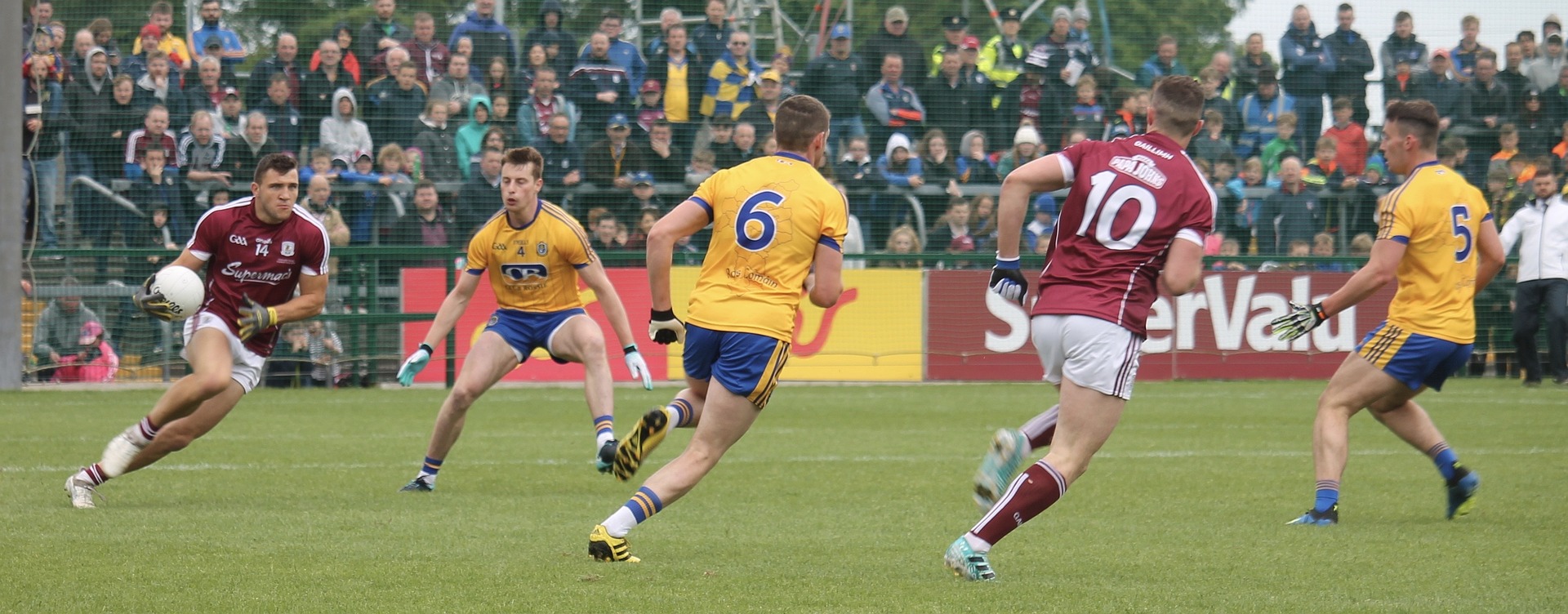Gaelic Football is an Irish sport, organised and managed by the GAA, and similar in many ways to the English version of football which is played across the globe.
There are many differences between the two games, but the most obvious to any bystander is that Gaelic players can use their hands and catch and hand-pass the ball under certain circumstances.
Below we will look at the rules and history of Gaelic Football.
What is Gaelic Football?
Gaelic Football is one of the staples of Irish sporting life. Like Hurling, it is organised by the GAA and represents a core pillar of Irish culture both historically and in the present day.
The Emerald Isle is dotted with GAA clubs. Some of these clubs are known as dual clubs (playing both Hurling and Gaelic) whereas others focus on a single sport.
Every club will compete in both league and Championship competitions. Championship sees local clubs compete against each other to become county champions, province champions and eventually All-Ireland winners if they go all the way.
At a county level, the competition is much the same with both league and Championship fixtures and the eventual winners of an All-Ireland inter-county Championship being crowned at Croke Park in Dublin.
Rules of Gaelic
As with all forms of football (in the European sense), the aim is to get the ball into the goal. However, Gaelic Football differs in many other ways.
Just like with Hurling, the pitch is 145 by 85 meters and the teams consist of 15 players. At the end of either side of the pitch you’ll see an H-shaped goal with posts that extend up beyond the original goals of a traditional football (or soccer) pitch.
Similar to Hurling, a goal will result in 3 points and a point (above the bar and between the posts) will result in 1 point on the scoreboard.
Probably the most significant difference between English and Gaelic football is that in Gaelic, you’re allowed to touch the ball with your hands. However, this is not like Rugby Union or Rugby League, and there are limitations to handling the ball.
To travel and carry the ball you have two options. You can run with the ball held in your hands, but you can only do this for 4 steps. To travel longer distances you will have to drop the ball and kick it back into your hands as you move; this technique is called soloing or a hand-to-toe movement.
When it comes to passing, you can catch the ball at any time and kick-pass to any player but you won’t be allowed to throw the ball. Instead you have to punch or hand-pass the ball, which generally involves using the base of the palm of your hand.
Since this is a version of football, players can also kick the ball on the grass, just like in the English version.
However, if the ball is on the floor, you cannot pick it up directly from the ground. You also can’t use your knees to pick it up. Instead, use your feet to flick it into the air and then catch it.
Much like in English football, Gaelic players can chase, harry and tackle opponents but they can also use their hands during this process. Freekicks and penalties are a common part of the game and similar to traditional football, players will get a yellow card as a warning and a red card to be sent off.
In Gaelic Football, a player can also receive a black card, which means they leave the field of play for 10 minutes and their team is a player short.
The History of Gaelic Football
Gaelic Football is nowhere near as old as Hurling.
Although the game was codified (rules written down) in 1887, records show a version of the game started in 1670 in County Meath. By this time, football had already gained popularity in Ireland, but the version played in Meath permitted players to catch the ball.
Other historians say it started even earlier. In 1527, a new law was passed that stated which games were and weren’t banned in Ireland. The game Hokie (a precursor to Hurling) was forbidden. Still, some translations say the then equivalent of Gaelic was not banned.
In 1967 the world saw the first ever “International Rules Series” of football. This is where rules from Gaelic Football and Australian Rules Football were combined to create a version of football that is different from but has similarities with both versions.
Because Gaelic Football isn’t normally played outside of Ireland (beyond Irish diaspora groups), and Australian Rules isn’t popular outside of Australia, all “International Rules” games are between Ireland and Australia.
Famous Gaelic Counties
The three most successful Gaelic counties, at the time of writing, is Kerry, Dublin and Galway. These teams, respectively, have the most All-Ireland Gaelic titles.
County Kerry, known colloquially as “The Kingdom”, has 38 All-Ireland titles in total with Dublin following up with 30 titles, and Galway a distant third with 9 titles in total.
The sheer dominance of Kerry is well-known but they have been repeatedly challenged in the 21st century with Dublin becoming a modern force to reckon with.

